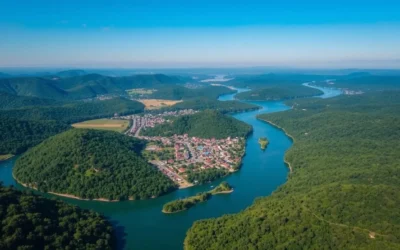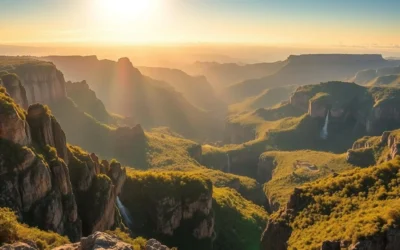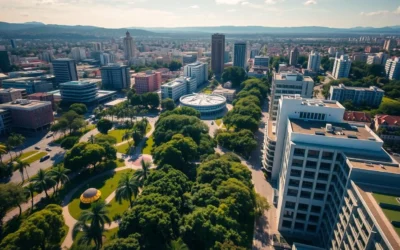Did you know that Campo Grande, often overlooked by international travelers, is home to the world’s largest freshwater aquarium? This “Morena City” (nicknamed for its reddish soil) serves as the perfect gateway to the southern Pantanal—one of the planet’s most biodiverse ecosystems—while offering its own unique blend of urban comfort and natural beauty that deserves your attention.
Getting There & Planning Your Journey
Campo Grande is well-connected to major Brazilian cities through its international airport (CGR). Direct flights operate daily from São Paulo (a 2-hour journey), Rio de Janeiro, and Brasília. For international travelers, the most common route is flying into São Paulo and connecting to Campo Grande.
Ready to Explore Campo Grande?
Find the best flight deals to start your Brazilian adventure!
When planning your trip, allow at least 3-4 days to explore the city itself, plus additional time if you’re planning excursions to the Pantanal (which we highly recommend). Most visitors use Campo Grande as a base for exploring the southern Pantanal region, but the city deserves attention in its own right.
Best Time to Visit & Weather Tips
Campo Grande enjoys a tropical climate with distinct wet and dry seasons. Understanding the weather patterns will help you plan the perfect visit.
Best Time to Visit Campo Grande
Recommended Months (Dry Season):
- May to October: Lower rainfall, comfortable temperatures ranging from 15-30°C (59-86°F)
- July-August: Peak wildlife viewing in the Pantanal with concentrated animal populations around water sources
- September-October: Beautiful flowering trees throughout the city
Months to Avoid (Wet Season):
- November to April: Heavy rainfall, especially December-February
- January-February: Hottest months with temperatures often exceeding 32°C (90°F)
- February: Carnival period brings higher prices and crowded accommodations
The ideal time to visit is during the dry season (May-October) when wildlife viewing is optimal and outdoor activities are more enjoyable. If you’re planning to visit the Pantanal, the dry season concentrates animals around water sources, making them easier to spot.

Getting Around Locally
Campo Grande is a planned city with wide, tree-lined avenues laid out in a grid pattern, making it relatively easy to navigate. Here are your best options for getting around:
Uber & Taxis
Uber operates throughout Campo Grande and is generally the most convenient option for tourists. Rides from the airport to the city center cost around R$30-40 (approximately $6-8 USD). Local taxis are also available but tend to be more expensive.
Public Transportation
The city has a bus network, but it can be challenging to navigate for non-Portuguese speakers. Buses are inexpensive (around R$4.50 per ride) but not ideal for tourists with limited time.
Rental Cars
For those planning to explore beyond the city limits or visit the Pantanal, renting a car is highly recommended. Major rental agencies operate at the airport and in the city center.
Explore at Your Own Pace
Rent a car to discover Campo Grande and the surrounding Pantanal region with complete freedom.
The main tourist attractions within the city are somewhat spread out, so having transportation is essential. Most hotels can arrange taxis or private drivers for day trips to nearby attractions.

Where to Stay in Campo Grande
Campo Grande offers a range of accommodation options to suit different budgets and preferences. Most hotels are concentrated in the central area near Avenida Afonso Pena and Avenida Mato Grosso, the city’s main thoroughfares.
Luxury & Business Hotels
The city has several high-quality hotels catering to business travelers and tourists seeking comfort. The Novotel Campo Grande and Deville Prime Campo Grande offer excellent amenities, including swimming pools, restaurants, and fitness centers, with rates starting around $70-100 USD per night.
Mid-Range Options
For comfortable accommodation at moderate prices, consider hotels like Ibis Campo Grande or Harbor Self Buriti. These offer clean, well-appointed rooms with basic amenities at approximately $40-70 USD per night.
Budget Accommodations
Budget travelers can find guesthouses (pousadas) and hostels throughout the city, with prices starting around $20-30 USD per night. Many offer simple but clean rooms with air conditioning—essential during Campo Grande’s hot months.
Find Your Perfect Stay in Campo Grande
Browse a wide selection of hotels, from luxury options to budget-friendly accommodations.
For travelers planning to explore the Pantanal, staying in Campo Grande for 1-2 nights before and after your wilderness adventure is recommended. The city offers all the comforts and services you’ll appreciate before heading into more remote areas.

Dining & Local Cuisine
Campo Grande’s culinary scene reflects its diverse cultural influences, from Portuguese and indigenous traditions to Paraguayan and Japanese flavors. The city is known for its excellent meat dishes, as Mato Grosso do Sul is cattle country.
Must-Try Local Specialties
Regional Dishes:
- Sobá – A noodle stew with pork and chicken, influenced by Japanese immigrants
- Chipa – A cheese bread snack with Paraguayan origins
- Arroz Carreteiro – A hearty rice dish with dried meat and vegetables
- Tereré – A cold yerba mate drink, perfect for hot days
Where to Eat:
- Feira Central – For authentic sobá and other local specialties
- Fogo Caipira – Excellent for traditional Pantanal cuisine
- Cantina Mato Grosso – Great for regional dishes and craft beers
- Mercadão Municipal – For fresh local products and casual dining
The Feira Central (Central Market) is a must-visit for food lovers. Open in the evenings, it offers a wide range of dining options and often features live music. Don’t miss trying sobá here—it’s been declared a Municipal Intangible Heritage.

Attractions, Sightseeing & Activities
Campo Grande offers a variety of attractions that showcase its natural beauty, cultural heritage, and urban charm. Here are the top sights and activities you shouldn’t miss:
Parque das Nações Indígenas
This massive urban park (the largest in Brazil) is Campo Grande’s crown jewel. Spanning 119 hectares, it features lakes, walking trails, and abundant wildlife. The park is famous for its resident capybaras, which can be seen lounging by the water or grazing on grass. You might also spot toucans, monkeys, and coatis. The park is perfect for morning walks, picnics, or simply relaxing in nature.
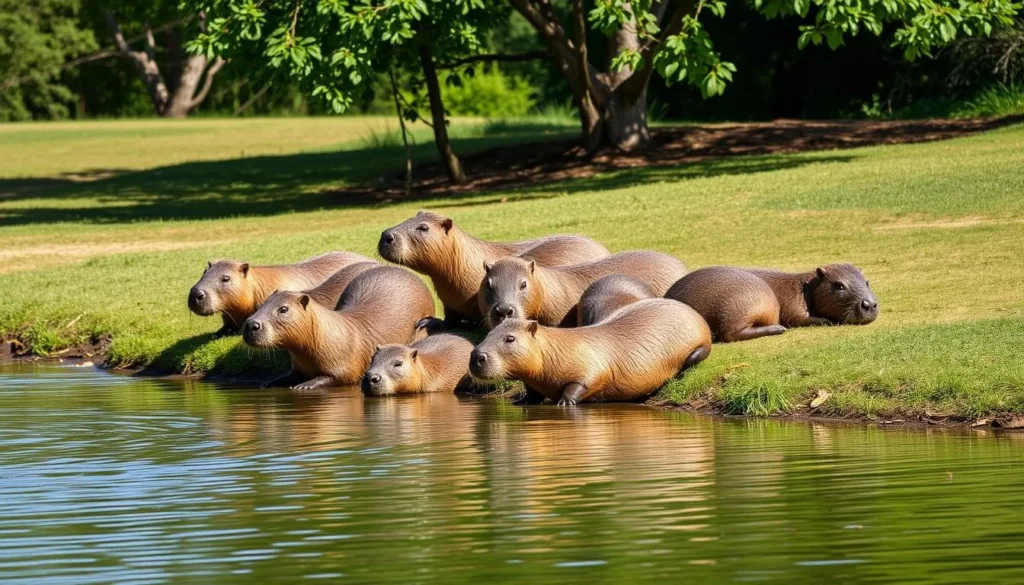
Bioparque Pantanal
Opened in 2022, this is the world’s largest freshwater aquarium and one of Campo Grande’s newest attractions. Located within Parque das Nações Indígenas, it showcases over 350 species of fish, reptiles, and amphibians from the Pantanal and other Brazilian ecosystems. The immersive exhibits include walkthrough tanks and interactive displays that educate visitors about the region’s rich biodiversity.
Experience Campo Grande’s Top Attractions
Book guided tours to make the most of your visit to Campo Grande and the surrounding region.
Metropolitan Cathedral
The Metropolitan Cathedral of Our Lady of the Abbey and St. Anthony is a striking blue-and-white church in the city center. Its distinctive architecture makes it a notable landmark, and the surrounding plaza is a pleasant spot to relax with a fresh coconut water from one of the nearby vendors.

Mercadão Municipal (Central Market)
This vibrant market is the perfect place to browse local products, from artisan crafts and spices to regional sweets. It’s also an excellent spot to purchase souvenirs at better prices than you’ll find in tourist shops. The market offers a glimpse into local life and commerce in Campo Grande.
Morada dos Baís
This historic building, constructed in 1913 for the Italian Baís family, now serves as a cultural center. It houses exhibits related to the city’s history, including works by Lydia Baís, one of Campo Grande’s most renowned artists. The building itself is an excellent example of early 20th-century architecture in the region.

Museums, Cultural Spots & Festivals
Campo Grande has a rich cultural scene that reflects its diverse heritage, from indigenous traditions to European and Asian influences. Here are the top cultural attractions to explore:
Dom Bosco Museum of Cultures
Located in Parque das Nações Indígenas, this museum houses an impressive collection of indigenous artifacts, particularly from the Bororo and Xavante peoples. Founded by Salesian priests in 1951, it’s renowned worldwide for its scientific rigor and extensive ethnographic collection. The museum provides valuable insights into the indigenous cultures of the Mato Grosso region.
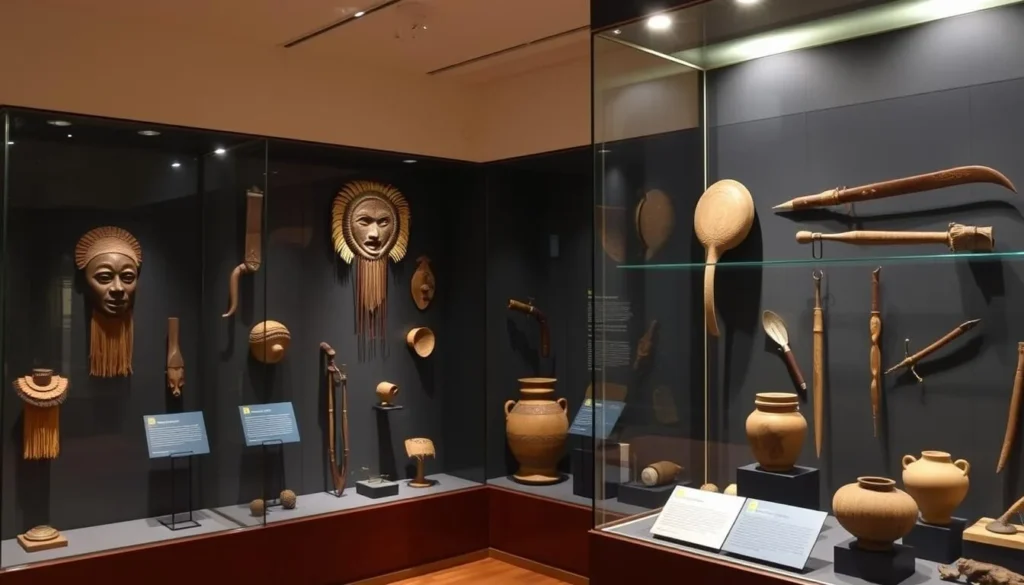
MARCO – Museum of Contemporary Art
This modern art museum showcases works by artists from Mato Grosso do Sul and beyond. The collection includes paintings, sculptures, and installations, with a particular focus on regional artistic expressions. The museum regularly hosts temporary exhibitions and cultural events.
Indigenous Culture Memorial
Located in the Marçal de Souza Urban Village, this emu-shaped memorial celebrates the cultures of the Terena, Kinikinau, Guarani, and Kadiwéu peoples. Visitors can purchase authentic ethnic products and learn about indigenous traditions. The urban village itself, primarily inhabited by Terena families, offers a unique glimpse into indigenous life in an urban setting.
Cultural Festivals
Campo Grande hosts several cultural events throughout the year:
- Festival América do Sul – Celebrating the cultural diversity of South America with music, dance, and art
- Sobá Festival – Held in August, this culinary festival celebrates the Japanese-influenced noodle dish that has become a Campo Grande specialty
- Festival de Inverno (Winter Festival) – Features concerts, theater performances, and art exhibitions during the cooler months

Sports, Nature & Outdoor Experiences
Campo Grande serves as an excellent gateway to outdoor adventures, both within the city and in the surrounding region. Here are the top natural attractions and outdoor activities to enjoy:
The Southern Pantanal
Campo Grande is the primary access point to the southern Pantanal, one of the world’s largest tropical wetland areas and a UNESCO World Heritage site. Day trips and multi-day excursions are available from the city, offering opportunities for wildlife viewing, fishing, and boat tours. The Pantanal is home to jaguars, capybaras, caimans, and hundreds of bird species.

Buraco das Araras
Located about 54 km from Campo Grande, this massive sinkhole (127 meters deep and 500 meters in diameter) is home to dozens of red-and-green macaws. A trail leads visitors to viewing platforms around the rim, offering spectacular views of the birds flying in and out of their nesting sites in the sinkhole walls. The site is now a Private Natural Heritage Reserve and can only be visited with local guides.
Discover the Natural Wonders Around Campo Grande
Book guided tours to the Pantanal, Buraco das Araras, and other natural attractions.
Horto Florestal
This urban forest park offers walking trails, sports facilities, and a water mirror. It’s a popular spot for bird watching and outdoor exercise. The park also houses the Carro de Boi Monument, which commemorates Campo Grande’s early settlement in the 1870s.
Lago do Amor (Lake of Love)
This artificial lake on the Federal University campus is a scenic spot where you can often see capybaras crossing the water. The lake features “O Beijo” (The Kiss), a sculpture representing two caras fish kissing. It’s particularly beautiful at sunset.

Safety, Etiquette & Local Customs
Campo Grande is generally considered one of Brazil’s safer cities, but travelers should still exercise normal precautions. Here’s what you need to know about staying safe and respecting local customs:
Safety Tips:
- Avoid walking alone at night, especially in the city center
- Use official taxis or ride-sharing apps rather than hailing vehicles on the street
- Keep valuables secure and be discreet with expensive cameras or phones
- Carry only the cash you need for the day and use hotel safes for passports and extra money
Local Etiquette:
- Greet people with “Bom dia” (good morning), “Boa tarde” (good afternoon), or “Boa noite” (good evening)
- Brazilians are typically warm and friendly—a smile goes a long way
- Tipping is not obligatory but appreciated for good service (10% is standard)
- Learn the difference between Mato Grosso and Mato Grosso do Sul—locals are proud of their state’s distinct identity
Cultural Insights
Campo Grande has a diverse cultural makeup influenced by indigenous traditions, European immigration, and proximity to Paraguay and Bolivia. The city has one of Brazil’s largest Japanese communities, which explains the popularity of dishes like sobá.
The “Pantaneiro” (cowboy) heritage is strong in the region, and you’ll notice this influence in local cuisine, music, and dress. Many locals enjoy drinking tereré, a cold yerba mate beverage that’s perfect for the hot climate—you’ll see people carrying their tereré kits (thermal containers and special straws) throughout the city.
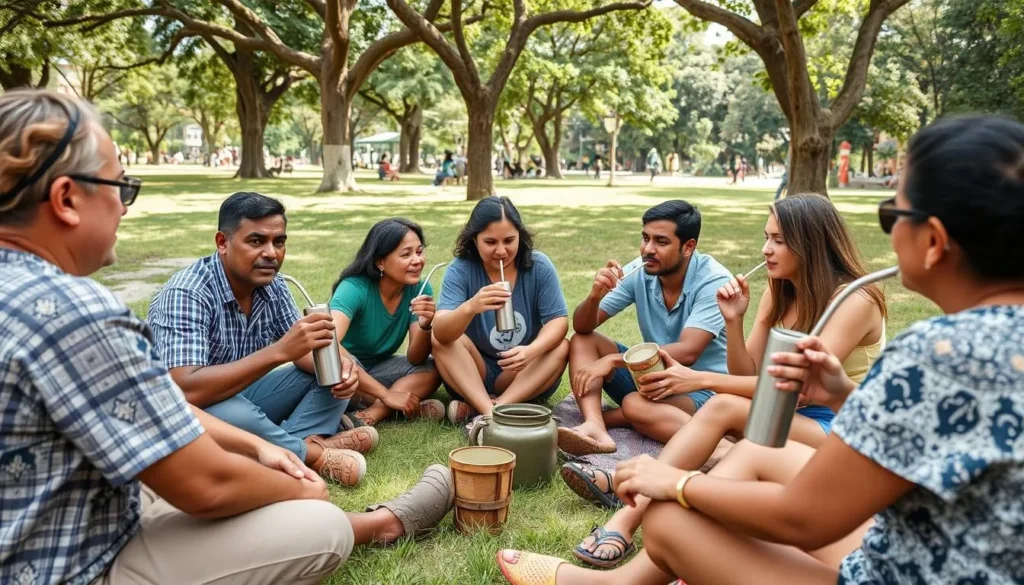
Practical Travel Tips
Make your trip to Campo Grande smooth and enjoyable with these essential practical tips:
Language
Portuguese is the official language, and English is not widely spoken outside of major hotels and tourist attractions. Learning a few basic Portuguese phrases will greatly enhance your experience. Consider downloading a translation app if you don’t speak the language.
Currency & Payments
The Brazilian Real (R$) is the local currency. ATMs are widely available, but not all accept international cards. Major credit cards are accepted in hotels and larger restaurants, but smaller establishments may be cash-only. Notify your bank of your travel plans to avoid card blocks.
Connectivity
Wi-Fi is available in most hotels, restaurants, and cafes. For mobile connectivity, consider purchasing a local SIM card upon arrival (you’ll need an unlocked phone). Claro, Vivo, and TIM are the main providers with good coverage in Campo Grande.
Entry Requirements
Visa requirements for Brazil vary depending on your nationality:
- Citizens of the UK, EU, and most South American countries do not need a visa for tourist stays up to 90 days
- As of April 2025, citizens of Australia, Canada, and the United States will require a tourist visa (check the latest requirements)
- Your passport should be valid for at least six months beyond your arrival date
- Proof of onward travel and sufficient funds may be requested upon arrival
Health & Medical
Campo Grande has good medical facilities, but travel insurance is strongly recommended. No specific vaccinations are required for entry, but hepatitis A, typhoid, and yellow fever vaccines are generally recommended for travel to Brazil. The city is not in a high-risk malaria zone, but consult with a travel health professional before your trip.
Day Trips to the Pantanal
No visit to Campo Grande would be complete without exploring the magnificent Pantanal wetlands. Here’s what you need to know about planning day trips or longer excursions:
Southern Pantanal Access
Campo Grande serves as the gateway to the southern Pantanal, with several tour operators offering packages ranging from single-day excursions to multi-day stays at wilderness lodges. The southern Pantanal is known for its accessibility and excellent wildlife viewing opportunities.
Popular Pantanal Activities:
- Wildlife safaris by boat or 4×4 vehicle
- Bird watching (the region is home to over 650 bird species)
- Fishing excursions for species like peacock bass and piranha
- Horseback riding through the wetlands
- Guided nature walks to spot flora and fauna
Recommended Duration:
- Day trip: Possible but limited—best for those with very tight schedules
- 2-3 days: Good introduction to the ecosystem
- 4-5 days: Ideal for comprehensive wildlife viewing
- 7+ days: For serious nature enthusiasts and photographers
Most Pantanal lodges offer all-inclusive packages with accommodation, meals, and guided activities. Prices vary widely depending on the level of comfort and exclusivity, but expect to budget at least $150-300 USD per person per day for a quality experience.

Experience the Magnificent Pantanal
Book guided tours from Campo Grande to explore one of the world’s most biodiverse ecosystems.
Side Trip to Bonito
While in Campo Grande, consider adding a side trip to Bonito, one of Brazil’s premier ecotourism destinations located about 300 km southwest of the city. Known for its crystal-clear rivers, caves, and abundant wildlife, Bonito offers unique experiences that complement your Campo Grande and Pantanal adventures.
Top Attractions in Bonito
- Rio da Prata – Snorkeling in crystal-clear waters surrounded by fish and underwater plants
- Gruta do Lago Azul – A cave with a stunning blue lake, considered one of Brazil’s most beautiful natural wonders
- Abismo Anhumas – Rappelling into a massive cavern with an underground lake
- Boca da Onça – Hiking trail passing by ten waterfalls, including the tallest in Mato Grosso do Sul
Most activities in Bonito require advance booking and must be done with authorized guides as part of the region’s commitment to sustainable tourism. Allow at least 3-4 days to properly experience Bonito’s highlights.
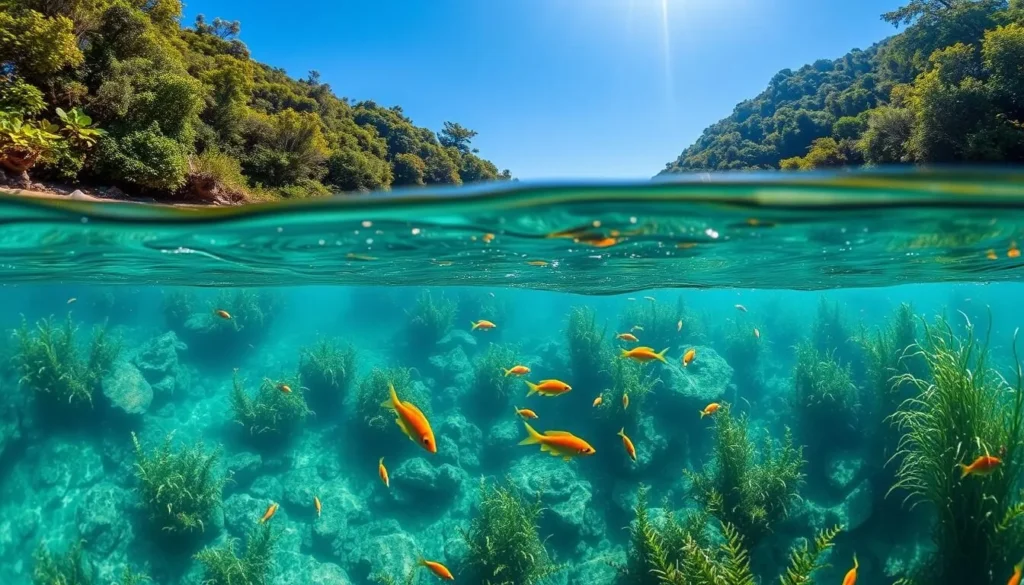
Conclusion
Campo Grande offers travelers a perfect blend of urban comfort and natural beauty, serving as both a destination in its own right and a gateway to the magnificent Pantanal wetlands. From the capybara-filled Parque das Nações Indígenas to the world’s largest freshwater aquarium, from vibrant cultural attractions to delicious regional cuisine, this “Morena City” deserves a spot on your Brazilian travel itinerary.
Whether you’re a wildlife enthusiast, a culture seeker, or simply looking to experience a less-touristed side of Brazil, Campo Grande welcomes you with wide, tree-lined avenues, friendly locals, and experiences that connect you to the heart of Brazil’s Midwest region. Start planning your Campo Grande adventure today and discover why this underrated destination is capturing the hearts of travelers who venture beyond Brazil’s more famous coastal cities.
Ready to Explore Campo Grande?
Start planning your perfect Brazilian adventure today!
The above is subject to change.
Check back often to TRAVEL.COM for the latest travel tips and deals.



